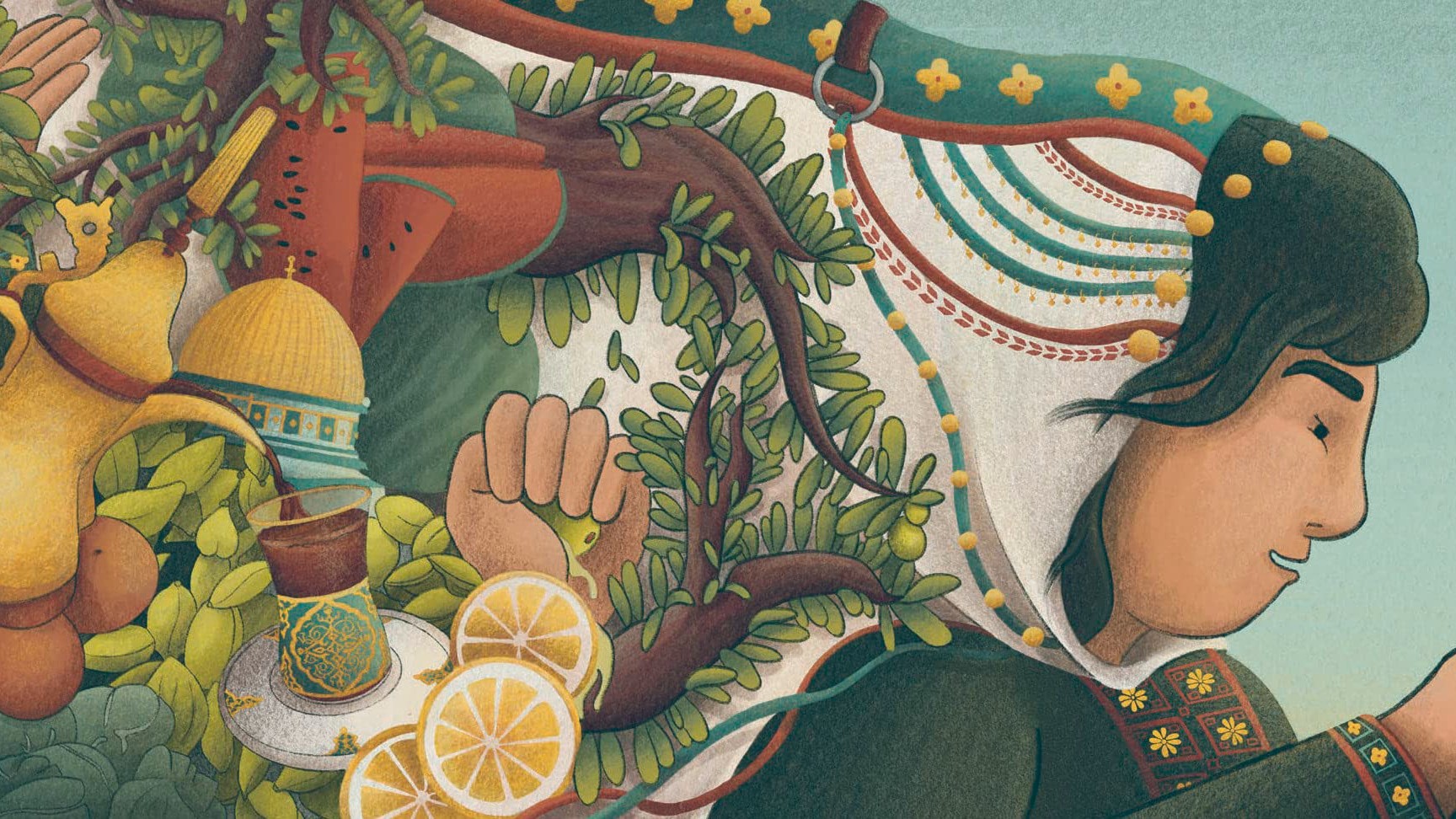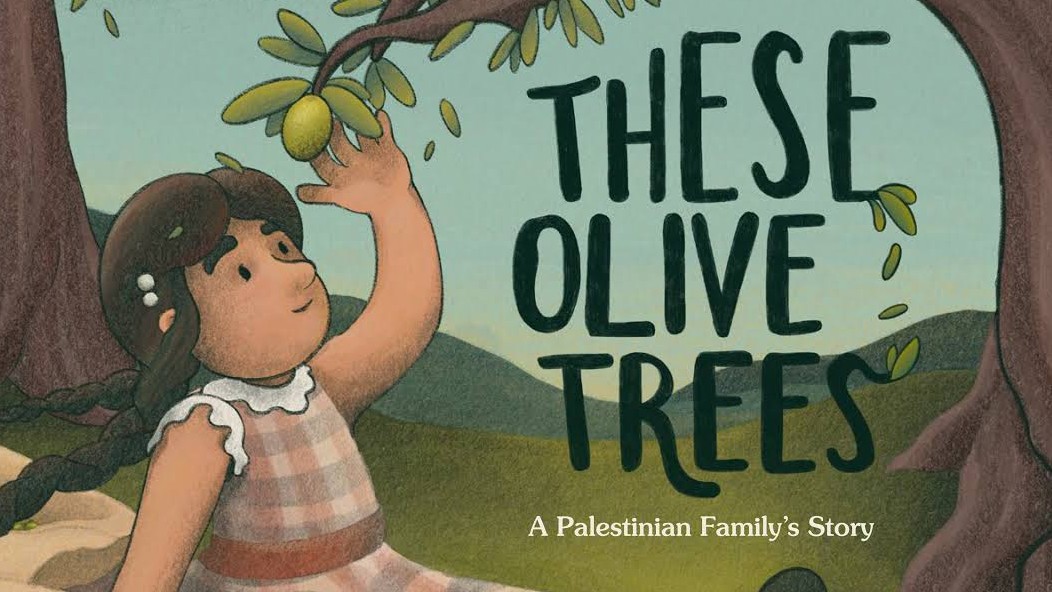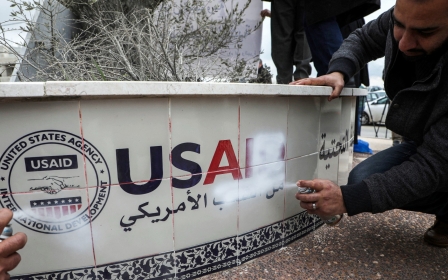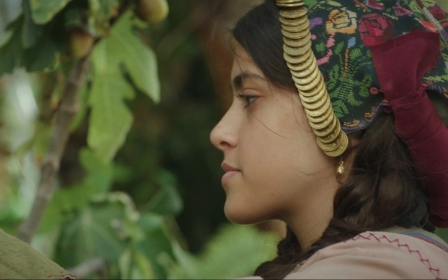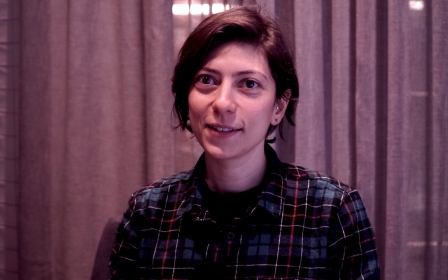These Olive Trees: A stunning children's book about land and loss in Palestine
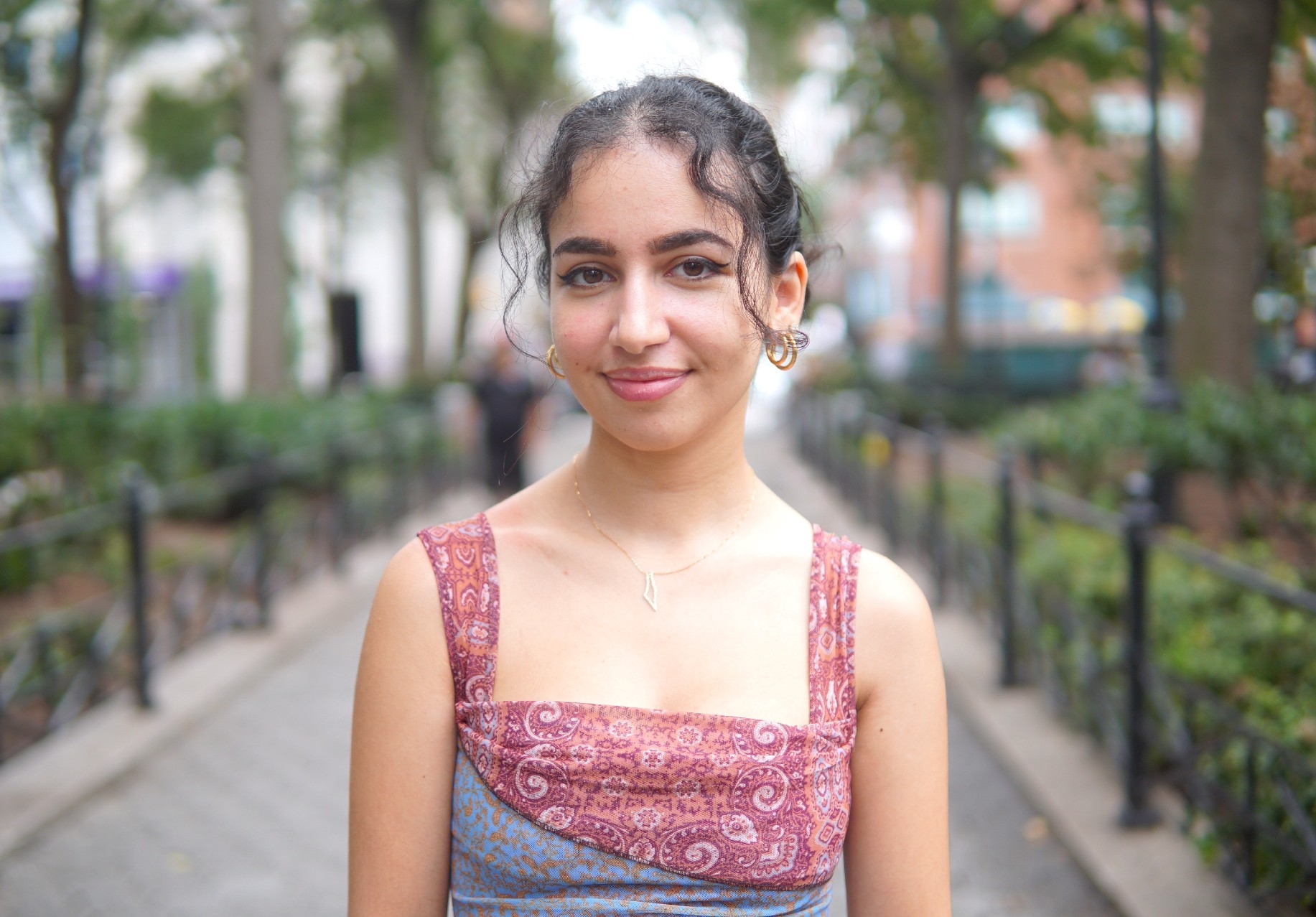
It’s a slow, muggy Monday afternoon in New York City. For weeks, a searing late summer heat has cast a lethargic net over its usually frenetic residents.
With some relief, Aya Ghanameh suggests we meet to talk about her first book at a cafe brimming with the fresh aroma of Colombian coffee, and whose air vents kick out an Arctic blast.
After we find a table and exchange pleasantries, we settle down to talk about her new children’s book, These Olive Trees: A Palestinian Family's Story.
At 40 pages and labelled appropriate for children between three to five (although I suspect older children would learn from it, too), the book is a haunting tale about how a Palestinian family, already living in a refugee camp in Nablus, are displaced after the 1967 war between Israel and several Arab states.
Its protagonist is a young girl named Oraib, who talks about her family’s relationship with the land, which is represented symbolically through the olive trees that lie at the fringes of their refugee camp in Nablus.
Stay informed with MEE's newsletters
Sign up to get the latest alerts, insights and analysis, starting with Turkey Unpacked
Oraib, based on Ghanameh's 70-year-old teta (grandmother), follows her mother around the camp and watches as olives are grown, picked, tasted and used in soap making and oil production.
When her family have to flee again, because of a new war, Oraib naturally wants to know what will happen to the crops.
"What about the olive trees?" she asks.
From school project to book deal
Ghanameh, 24, grew up in Jordan before she came to the US as a student in 2018.
She studied illustration at the Rhode Island School of Design (RISD), spending much of her time writing and illustrating comics that frequently revolve around her Palestinian identity.
She says that as a budding artist, it wasn't a particularly deliberate decision to focus on Palestine, but anti-Palestinian sentiment in the US made her want to restate her Palestinian history and identity by illustrating it in a school project - one that ended up taking on a life of its own.
After she completed the project and got an A grade, she posted images of her mock book on social media and found herself inundated with enquiries about how to buy it.
Amused, she told the wellwishers that the book was just a school project and not for sale.
But then a publisher got in touch and suggested she have it published. Ghanameh found an agent, and the next thing she knew, Penguin Random House's Viking imprint bought it, while asking her to slightly expand on it.
Earlier this year, Penguin hired her as a book designer. Now, she is designing an entire generation of picture books, board books and graphic novels for the publishing behemoth.
As a fan of Joe Sacco’s iconic graphic novel Palestine in high school, she thought a graphic novel would likely be on the cards. But it ended up being a children's book. "For now," she says with a smile.
Digging through the archives
When she began her research for These Olive Trees, Ghanameh riffled through photo albums and old video tapes, making notes on clothing, the people and the landscape she encountered.
Oraib's modest checkered dress and white stockings are something Ghanameh spotted in a family video tape; her great-grandfather's moustache and hairstyle, too, were inspired by something she saw in a family photograph.
"There isn't much representation in children's books on Palestine, or what happened in Palestine," Ghanameh explains.
She then focused on what is often described as a symbol of Palestinian resilience: olive trees. "So much of the Palestinian identity is tied to the land," she adds.
'So much of the Palestinian identity is tied to the land'
- Aya Ghanameh, illustrator
"And much Palestinian culture, economy and heritage has been rooted into olive trees for centuries. A lot of the trees have been there for thousands of years, so naturally it became a symbol of Palestinian resistance," Ghanameh says.
But to make the story age appropriate and palatable for a wider audience, the story itself would not depict the actions of Israeli soldiers; the text is bereft of words like "occupation" or "settler colonialism". Instead, the images do the talking. And when the family is faced with expulsion, large, wide, ghostly hands hover over Palestine, signifying its takeover by the Israelis.
The story at its simplest is of a young Palestinian girl and her connection to the olive trees, a resilient and resolute symbol of Palestinian identity and belonging. It takes place in the broader and unspoken context of Israeli expansion over Palestinian lands and the destruction of homes, farms and livelihoods.
The result is an exquisite mainstream children's book that is also proud and bold.
As the pages turn, the book unveils a story that presents the Palestinians, much like the thousand-year-old olive trees, as both a function of and a servant to the land.
When Oraib narrates how her family were first exiled in 1948, the olive trees seem to keel over in distress. Later, in 1967, when they move again, Oraib observes nature's reaction to the coming crisis and occupation.
"The sky is gray and the earth is damp with the knowledge that the war has found its way to Nablus," Oraib narrates.
Later, when it's understood that they have to pack up and leave, Oraib plants an olive pip in the soil.
"Wait for me. One day, when we're older, I'll return to you for harvest," she says.
Ghanameh says the story is not unique to her own family's experiences.
"It's not just the story of my grandmother; it's the story of literally every Palestinian refugee," she tells Middle East Eye.
To ensure that none of the nuance is lost, given the genre limitations of a children's book, Ghanameh says she added an author's note at the end for parents to better understand the Palestinian story, and to put the initiative on them to take on the task of learning about it.
In the note, she briefly explains the larger context of the Nakba, the forced expulsion of Palestinians in 1948, and the continuing displacement of Palestinians from their land under Israel's apartheid system.
"The Nakba is not a single story that can be told in a book. It is not only Oraib's story, either," Ghanameh writes. "It is the story of every child displaced: from the military occupation of Nablus to the blockade of Gaza. It is the story of every Palestinian refugee who is condemned to a life in the refugee camps, and the story of every olive tree still standing.
"Like these olive trees, we are still here," she signs off.
Indeed, she hopes that this book will plant a seed in the minds of children in the US and elsewhere.
"I wanted to write something that felt a little universal. And because the Zionist narrative is so overwhelming, it is important that we keep speaking about what happened to us," Ghanameh says.
"It's a form of truth telling and that's what is important to me."
Aya Ghanameh will speak at the Palestine Writes Literature Festival in Philadelphia between 22 and 24 September 2023
Middle East Eye delivers independent and unrivalled coverage and analysis of the Middle East, North Africa and beyond. To learn more about republishing this content and the associated fees, please fill out this form. More about MEE can be found here.


